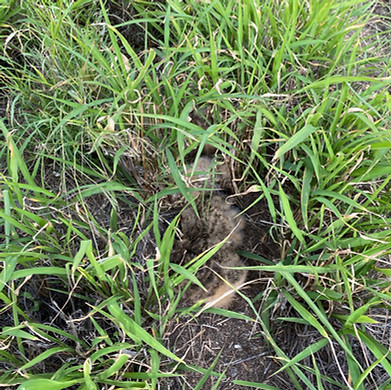Pueo Observation Types
Owl Pellets
One of our researchers is analyzing pueo roost sites and diet by dissecting their pellets. Pellets are indigestible material left in the gizzard such as teeth, skulls, claws, and feathers that are unable to pass through the rest of the owl's digestive tract. To safely excrete this material, the owl's gizzard compacts it into a tight pellet that the owl regurgitates. Owls often roost on posts. Below a roosting site you may encounter multiple pellets. If you encounter a pueo roost site or pellet, please record the location you found it, take some photos, and submit a report to us!

Pueo Pellet Examples
Pellets can be highly variable. There are slight differences between Barn Owl and Pueo pellets. Please take a picture with your pellet report and we will assess species associated with the pellet. These are samples of pueo pellets taken by Molly Hagemann at the Bishop Museum.
_JPG.jpg)
.jpg)
Breeding behavior
The easiest pueo breeding behavior to observe are display flights, also known as sky dancing. Males will fly around in an acrobatic fashion, often calling and also wing clapping. Females will sometimes accompany them in flight or be perched on the ground below watching. Check out the videos below for examples of sky dancing.
Other breeding behaviors that are less conspicuous include nest incubation (a pueo sitting in the same spot on the ground for hours at a time), or delivery of a prey item to a nest.
Nests
Pueo nest on the ground, generally in a small scraped out bowl of matted down grasses and vegetation. Nests are very difficult to find, and are usually located when the female is disturbed from incubating and flies from the nest. Pueo are very sensitive and prone to nest abandonment, so if you do find a nest or flush a pueo from the ground, we recommend noting the location of the nest, taking a photo, and leaving the area as quickly as possible. These are some nests we have found before. Some have loosely shaped bowls with matted vegetation on the bottom, while others just look like bare ground. Eggs are evenly round and white. In the lower left photo, you can see chicks with tan/brown plumage.





